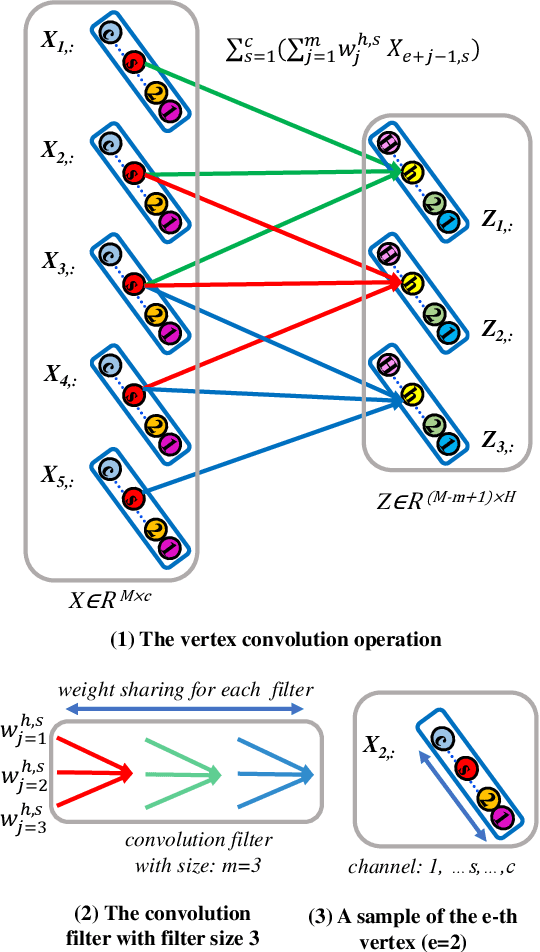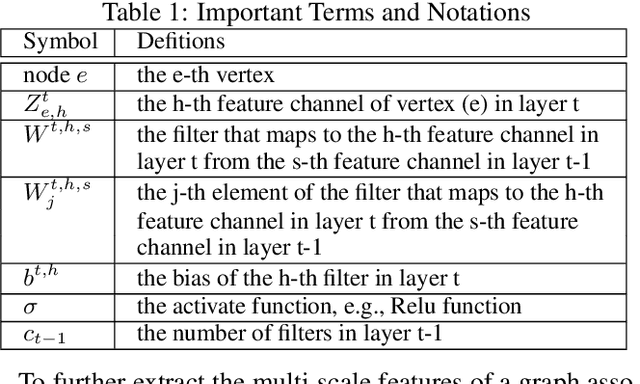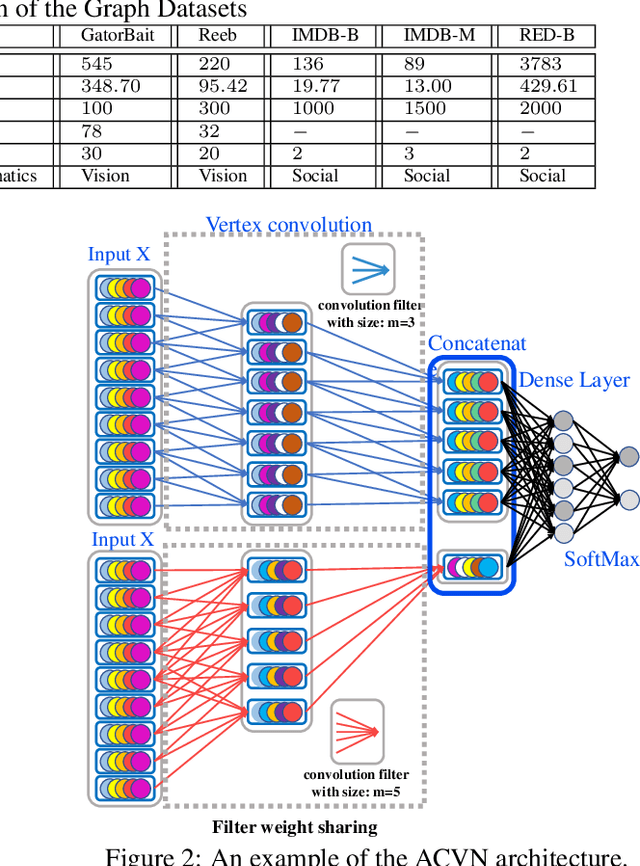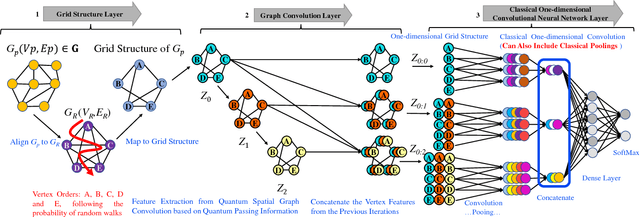Yuhang Jiao
Learning Aligned-Spatial Graph Convolutional Networks for Graph Classification
Apr 06, 2019



Abstract:In this paper, we develop a novel Aligned-Spatial Graph Convolutional Network (ASGCN) model to learn effective features for graph classification. Our idea is to transform arbitrary-sized graphs into fixed-sized aligned grid structures, and define a new spatial graph convolution operation associated with the grid structures. We show that the proposed ASGCN model not only reduces the problems of information loss and imprecise information representation arising in existing spatially-based Graph Convolutional Network (GCN) models, but also bridges the theoretical gap between traditional Convolutional Neural Network (CNN) models and spatially-based GCN models. Moreover, the proposed ASGCN model can adaptively discriminate the importance between specified vertices during the process of spatial graph convolution, explaining the effectiveness of the proposed model. Experiments on standard graph datasets demonstrate the effectiveness of the proposed model.
Learning Vertex Convolutional Networks for Graph Classification
Feb 26, 2019



Abstract:In this paper, we develop a new aligned vertex convolutional network model to learn multi-scale local-level vertex features for graph classification. Our idea is to transform the graphs of arbitrary sizes into fixed-sized aligned vertex grid structures, and define a new vertex convolution operation by adopting a set of fixed-sized one-dimensional convolution filters on the grid structure. We show that the proposed model not only integrates the precise structural correspondence information between graphs but also minimises the loss of structural information residing on local-level vertices. Experiments on standard graph datasets demonstrate the effectiveness of the proposed model.
A Quantum Spatial Graph Convolutional Neural Network using Quantum Passing Information
Sep 04, 2018



Abstract:In this paper, we develop a new Quantum Spatial Graph Convolutional Neural Network (QSGCNN) model that can directly learn a classification function for graphs of arbitrary sizes. Unlike state-of-the-art Graph Convolutional Neural Network (GCN) models, the proposed QSGCNN model incorporates the process of identifying transitive aligned vertices between graphs, and transforms arbitrary sized graphs into fixed-sized aligned vertex grid structures. To further learn representative graph characteristics, a new quantum spatial graph convolution is proposed and employed to extract multi-scale vertex features, in terms of quantum passing information between grid vertices of each graph. Since the quantum spatial convolution preserves the property of the input grid structures, the proposed QSGCNN model allows to directly employ the traditional convolutional neural network to further learn from the global graph topology, providing an end-to-end deep learning architecture that integrates the graph representation and learning in the quantum spatial graph convolution layer and the traditional convolutional layer for graph classifications. We demonstrate the effectiveness of the proposed QSGCNN model in terms of the theoretical connections to state-of-the-art methods. The proposed QSGCNN model addresses the shortcomings of information loss and imprecise information representation arising in existing GCN models associated with SortPooling or SumPooling layers. Experimental results on benchmark graph classification datasets demonstrate the effectiveness of the proposed QSGCNN model.
 Add to Chrome
Add to Chrome Add to Firefox
Add to Firefox Add to Edge
Add to Edge